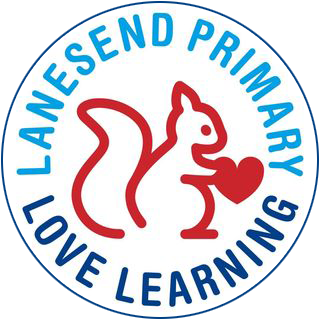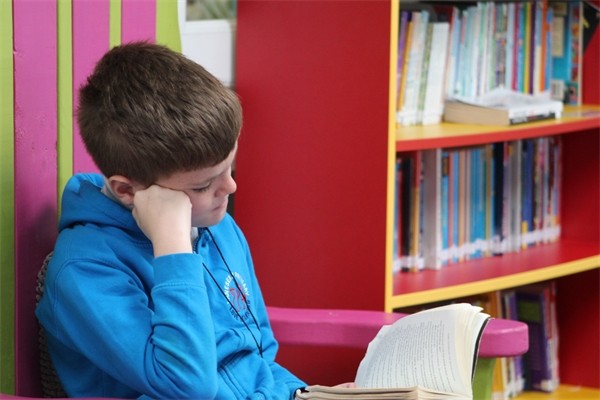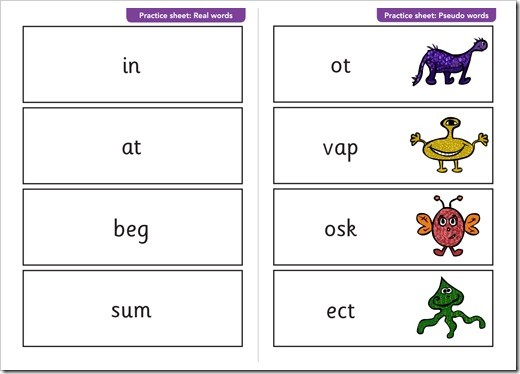Vision for English
Our aim is to ensure that children leave Lanesend as independent readers; with a wide, rich vocabulary, emotional intelligence and a sense of belonging; with a broad knowledge of the world and the skills to access to learning at Secondary School and beyond. Along with this, we intend to introduce our children to a life where reading for pleasure is valued; and can be passed on to future generations.
At our school, we develop a love of reading by celebrating, enabling and encouraging children to read, listen to and have access to a rich variety of texts, which challenge, excite and reflect the world that we live in; now; in the past; and in the future.
We ensure that the books selected to be part of our Reading Spine include non-fiction, poetry, classics, books which represent a diverse world, which promote a sense of belonging and the best recently published children’s fiction.
Our Reading Spine includes books to share throughout the day; text drivers for inspiring writing and developing wider curriculum understanding; recommendations for class reading areas and books to select extracts from to use in reading lessons.
How can you help your child to learn to read?
The early stages of learning to read are so important for your child’s development. We need you to be as involved as much as possible in being part of their reading journey. Our aim is to support all families in gaining confidence to support their child in practicing reading at home.
What is Phonics?
Phonics is a way of teaching children to read quickly and skillfully. They are taught how to:
- Recognise the sounds that each individual letters make;
- Identify the sounds that different combinations of letters make - such as 'sh' in shut and 'oo' in good;
- Blend sounds together from left to right to read a word.
Children can then use this knowledge to ‘de-code’ new words that they hear or see. This is the first important step in learning to read.
Research shows that when phonics is taught in a structured way, it is the most effective way of teaching young children to read. Children who receive effective teaching of phonics learn the skills they need to tackle new words. They can then go on to read any kind of text fluently and confidently, and to read for enjoyment. It is particularly helpful for children aged 5 to 7 and begins at Lanesend when the children start Reception and continues for all children until Year 2.
Little Wandle
At Lanesend, we use Little Wandle as our Systematic Synthetic Phonics programme for the teacher of early reading and writing. Phonics is making connections between the sounds of our spoken words and the letters that are used to write them down. Our phonics teaching follows the cycle of revisit and review, teach, practise and apply. Our aim is to teach children to sound out and blend in order to read words.
Because learning to read is so important, we revisit phonics throughout the day and also have two structured phonics lessons every day in Reception and Year 1. Children who need a little longer to become secure in early reading, continue to receive phonics lessons using 'Rapid Catch Up' or 'SEND' programmes until they gain confidence in reading.
Little Wandle
What is the Phonics Screening Check?
The Phonics Screening Check is a statutory check which takes place in June in Year 1 for all children. This check of your child’s phonics knowledge helps to confirm whether your child is making expected progress in reading.
After the check
We will tell you about your child’s progress in phonics and how they have done in the screening check in your child's end of year report. If your child has not reached the expected standard, we will tell you what support we have put in place to help them with their phonics learning and how you can continue to help them at home.
Children who have not met the National standard score in Year 1 will retake the check in Year 2. Early Reading.
Early Reading
The children following Little Wandle in Reception, Year One and Year Two will have two daily Phonic sessions and they will also have reading practice sessions in groups at school three times a week. The children will have the same book for each session, with a different focus each time:
-
Decoding - the process of seeing written words on a page and being able to say them out loud
-
Prosody - reading with rhythm, stress and intonation
-
Comprehension - developing understanding of what they have read
We have purchased the Collins Big Cat Books that go alongside the Little Wandle Scheme. These are completely decodable and matched to what is being taught in the lessons. Each week, the children will bring home the same book that they have been reading in their practice sessions, and these will be changed once a week.
As the aim is to create fluency in independent reading, the children should be reading their decodable book daily at home so it is revisited several times. The book from the Little Wandle Scheme is carefully matched to your child’s stage of reading, so if your child is reading it with limited support, please do not worry that it is too easy; it is designed to develop fluency and confidence. Providing lots of praise and encouragement will really help their fluency and confidence. If they are unsure about a word, read it to them and ensure you talk about what it means.
Reading for Pleasure Library Books
In order to encourage your child to become a lifelong reader, it is important that they learn to read for pleasure too. We want to continue to promote and develop a strong love for reading in all our children and this is achieved by sharing books together. To support this, children will also bring home a second book from our library as a ‘high quality text’ which we ask you to read to the children and share the pleasure of a book together. Reading these books also aids the children’s language and imagination. This will help them in all aspects of the curriculum. Please do not ask your child to read the sharing book to you as it will be beyond their level, although they may recognise some sounds or words in it, or even know the story or parts of the text off by heart.
When reading with your child, the key to unlocking comprehension is asking them questions and having beneficial discussions. Questions unlock thinking and discussing the pictures, predicting what might happen next, using different voices for different characters, thinking about character’s personalities and relating the books to their own lives are all fantastic ways to work on comprehension. Exploring a range of non-fiction texts is also invaluable for the children’s knowledge and understanding of the world and they are able to choose these to bring home too.
Please continue to support us by reading daily with your child at home. Our main aim is to make reading enjoyable and no child is ever too old to be read to.


